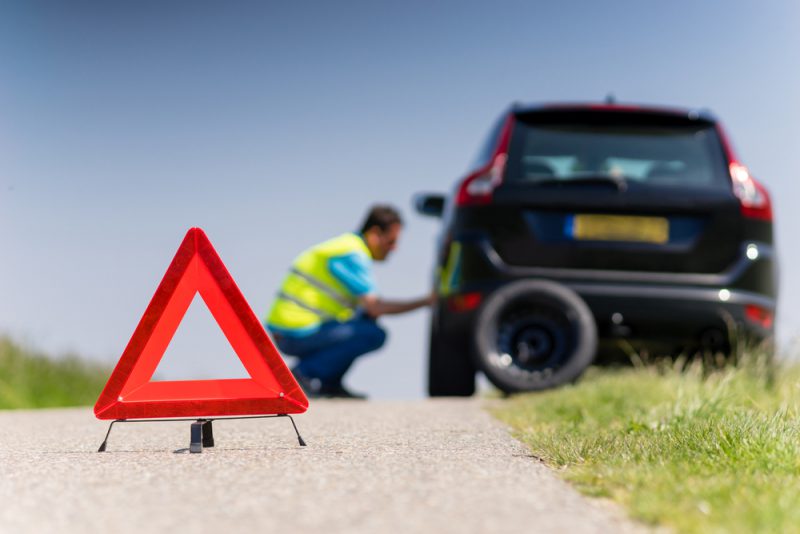 shutterstock / Fotosenmeer
shutterstock / Fotosenmeer
Breaking down could make your bank holiday weekend memorable for all the wrong reasons. But the vast majority of breakdowns are avoidable. Less than five minutes spent checking your car over at home could save you the time and potential hassle of breaking down by the side of the road.
Vehicle check
Before setting off, check the coolant level is between the ‘min’ and ‘max’ markers and that the oil level is correct. Look at your tyres too. They shouldn’t have any lumps or bulges in the sidewall: this indicates a structural weakness that might cause a blow-out. Tread depth should be at least 1.6mm around the central circumference to comply with the law. You can measure this with the outer rim of a 20 pence piece.
Using data from last year’s Whit weekend, Green Flag estimates there will be 51,000 bank holiday breakdowns between Saturday morning and Monday evening. Of these, the largest proportion – a fifth – will be down to battery trouble.
Foil a flat battery
A car battery should last between three and five years but a lot depends on the kind of mileage you do. Short journeys where you use equipment like the lights and air-conditioning reduce battery life because it never really gets to recharge after starting the car. Regular longer journeys give the battery a chance to regain full charge. If you have your doubts, it’s difficult to test a battery yourself but your garage should be able to give you an idea quickly and cheaply of whether it needs replacing or not.
Tyre inspection
The second most frequent cause of breakdowns is flat tyres. Last year there was approximately one a minute during the Whit weekend. Drivers covering around 12,000 miles a year can expect to have a puncture about once every five years. But again, some simple steps can help reduce the likelihood of a breakdown.
Tyres that are at the correct pressure are less susceptible to blow outs than those that aren’t. You’ll find the correct tyre pressures for your car either on the door pillar or inside the fuel flap. The vast majority of tyres are slightly under-inflated which not only increases their chances of having a puncture but also reduces fuel economy. According to tyre companies, a tyre that’s under-inflated by 15-20 per cent uses five per cent more fuel and has its life reduced by around a quarter. Make sure you check the spare too and that you have tools such as a jack, wheel brace and your car’s locking wheel nut key if it has alloy wheels.
Other precautions Green Flag recommends drivers take include:
- Keeping a road map in the car so you’ll be able to explain where you are when you call for help. Don’t rely on the map on your phone: you won’t always have signal
- Keeping some coins or a phonecard in the car in case you need to call for help and there’s no mobile phone signal
- Making sure your phone battery is topped up – think about buying an in-car charger just in case you need it
- Having the number for your emergency breakdown provider handy. You’ll usually find it on your policy certificate so you could keep this in your glove box
- Carrying a red warning triangle at all times and have at least one reflective jacket in the car
 Nick Reid is head of automotive technology at Direct Line Group and is also a fellow of the Institute of the Automotive Industry
Nick Reid is head of automotive technology at Direct Line Group and is also a fellow of the Institute of the Automotive Industry
I am 84 my wife 82 Can we get cover ?